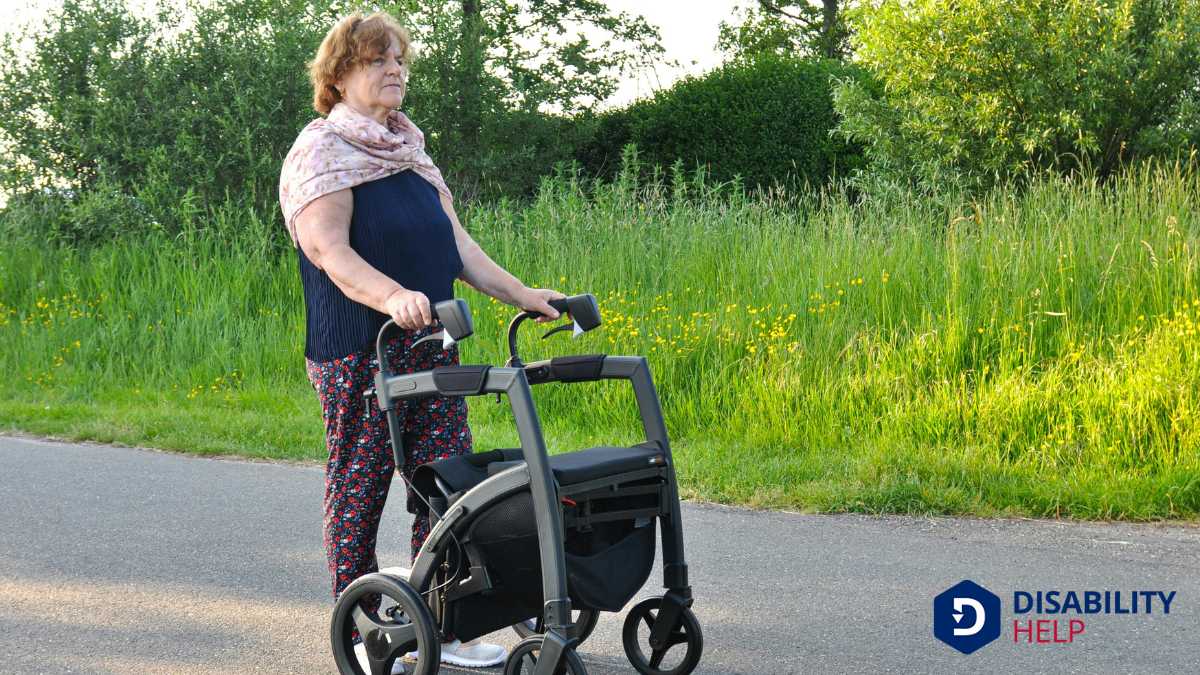When considering mobility assistance tools, we often wonder which aid professionals most frequently suggest. With various options available, from canes to electric scooters, choosing the right one can be challenging. Occupational and physical therapists play an essential role in guiding us through this decision-making process. They assess our individual needs and recommend the most suitable device. So, which tool do they favor for those needing moderate support? Let's explore their top choice for enhancing mobility.
Key Takeaways
- Occupational and physical therapists often recommend wheelchairs for individuals with complex mobility requirements needing maximum support.
- Rollators are frequently suggested for those seeking a balance of mobility, stability, and convenience in various terrain types.
- Canes are commonly advised for users with minor balance issues requiring a simple and portable support tool.
- Scooters are suggested for users needing medium-distance mobility with ease of transport and simple controls.
- Walkers are recommended for providing stability and support on smooth, indoor surfaces for users with limited mobility.
Understanding the Different Types of Mobility Aids
When it comes to mobility aidsDevices designed to help individuals move around more easily, such as canes, walkers, or wheelchairs..., it's important to understand the variety of options available to us. Canes are often the simplest choice, providing just enough support for those with minor balance issues.
Walkers, with their sturdy frames, offer more stability and are ideal for short distances. For longer distances, wheelchairs become essential. They range from manual to powered, catering to different levels of assistance needed.
Scooters are another great option, giving us the freedom to navigate larger spaces more easily. Crutches and knee scooters serve those with temporary injuries, offering support while we heal.
Each mobility aid addresses specific needs, ensuring we maintain independence and safety. Understanding these options helps us make informed decisions about our mobility requirements.
Factors Affecting the Choice of Mobility Assistance Tools

When we're choosing mobility assistance tools, it's vital to take into account the user's physical condition, as it directly influences what kind of support is needed.
We also need to think about the environment and terrain, which can impact the tool's effectiveness and safety.
Additionally, tool portability and weight play significant roles in ensuring that the aid is practical for everyday use.
User's Physical Condition
Understanding a user’s physical condition is vital in selecting the right mobility assistance tool. We need to take into account the user’s strength, balance, endurance, and any specific conditions like arthritisInflammation of the joints, leading to pain, stiffness, and limited movement. or neurological disorders. These factors directly impact the type of support they require.
For instance, someone with limited upper body strength might struggle with a walkerA mobility aid with a metal frame and sometimes wheels, used by individuals who need additional supp... but thrive with a rollator. Balance issues could make a caneA mobility aid used to assist with balance and walking. more suitable than crutches. We should also assess the user’s ability to maneuver and control the device safely.
Comfort and ease of use are important, as they encourage consistent use. By tailoring our choice to their physical capabilities, we guarantee the tool provides the best support and enhances their independence and quality of life.
Environment and Terrain
While choosing the right mobility assistance tool, we must consider the environment and terrain in which it will be used. Different settings present unique challenges.
For instance, urban areas with smooth pavements might require different tools compared to rural settings with uneven paths. If we’re dealing with grassy parks or sandy beaches, stability becomes essential.
We should also think about indoor versus outdoor use. Indoors, a compact tool is often more beneficial for maneuvering tight spaces and corners. For outdoor adventures, wheels or grips designed for rough terrain might be necessary.
Weather conditions are another factor; wet or icy surfaces demand enhanced traction. By evaluating these environmental aspects, we can guarantee the chosen tool provides the best support and safety.
Tool Portability and Weight
In addition to environmental considerations, we must also think about the portability and weight of mobility assistance tools. When selecting a suitable device, we should prioritize ease of transport.
Lightweight tools are often more appealing, especially for those who frequently travel or need to navigate multiple environments. A heavy device can hinder mobility rather than assist it, turning everyday tasks into challenges.
Let’s consider collapsible or foldable designs. These options offer convenience for storage and transportation. A device that’s easy to pack and carry can make a world of difference when moving through busy areas or using public transportation.
Additionally, we should pay attention to the materials used. Lightweight, durable materials like aluminum and carbon fiber not only reduce weight but also enhance overall usability.
The Role of Occupational and Physical Therapists in Mobility Aid Selection
When it comes to selecting the right mobility aid, occupational and physical therapists play a crucial role in guiding us through the process. They assess our individual needs, guaranteeing we receive the most suitable device.
Their expertise helps us understand the options and choose wisely. Here’s how they assist:
- Assessment: They evaluate our physical capabilities, lifestyle, and environment to recommend the best aid.
- Customization: Therapists make sure devices are tailored for maximum comfort and support.
- Training: We receive instruction on proper usage, reducing the risk of injury.
- Follow-up: Ongoing support guarantees adjustments are made as our needs evolve.
Canes and Walking Sticks: Simple Yet Effective Solutions
Canes and walking sticks, often overlooked, are incredibly effective tools for enhancing mobility. They provide support and balance, helping us move with more confidence and independence.
Many of us mightn't realize how a simple cane can make a considerable difference in daily life, especially for those with minor balance issues or joint pain.
These tools are lightweight, easy to use, and relatively inexpensive compared to more complex devices. We can find canes with various features, such as adjustable heights, ergonomic handles, and non-slip tips to suit individual needs.
Walkers and Rollators: Enhancing Stability and Support

Let's explore how walkers and rollators can provide us with enhanced stability and support.
We'll look at different types of walkers and highlight key features of rollators that might suit our needs.
With so many options, choosing the right device can make all the difference in maintaining our mobility and confidence.
Types of Walkers
Although mobility challenges can be intimidating, walkers and rollators offer essential support and stability, enabling individuals to maintain independence and confidence.
Let's explore the different types of walkers available to meet various needs.
- Standard Walkers: These have four sturdy legs that provide balance and support, ideal for those who need to bear more weight on the walker.
- Two-Wheeled Walkers: With wheels on the front legs, these allow for easier movement and are great for individuals who require less weight support.
- Three-Wheeled Walkers: These are more maneuverable, suitable for tighter spaces and lighter support needs.
- Knee Walkers: Perfect for those with foot or ankle injuries, these allow us to rest a knee and propel forward comfortably.
Each type caters to specific requirements, enhancing mobility with ease.
Rollator Features Overview
Many of us who seek enhanced mobility and stability will find rollators to be an invaluable tool. These devices offer more than traditional walkers by incorporating wheels, making them easier to steer. Rollators typically feature four wheels, a built-in seat, and ergonomic handles with brakes for safety.
The convenience of a seat provides us with the option to rest whenever needed, making outings more manageable and enjoyable. Additionally, most rollators come with storage baskets or pouches, allowing us to carry personal items hands-free.
Adjustable height settings guarantee a comfortable fit, reducing strain and promoting proper posture. Lightweight frames help with easy transport, whether we’re maneuvering indoors or outside.
With rollators, we gain confidence and independence, enhancing our overall quality of life.
Choosing the Right Device
When it comes to choosing the right mobility device, understanding our specific needs and lifestyle is essential. Walkers and rollators are popular options for enhancing stability and support.
Let’s consider key factors to help us make an informed decision:
- Mobility Level: If we need maximum support, walkers are ideal. Rollators suit those who require less stability but value convenience and speed.
- Terrain: Indoors or smooth surfaces work well for standard walkers. Rollators with larger wheels handle uneven or outdoor terrain better.
- Portability: Walkers are generally lighter and easier to fold, making them great for travel. Rollators, while heavier, often have seats and storage.
- Balance and Coordination: Assess our ability to maneuver the device safely, ensuring it aligns with our physical condition and daily activities.
Wheelchairs and Power Chairs: When Greater Support Is Needed
As our mobility needs evolve or become more complex, wheelchairs and power chairs often provide the essential support and independence we require. These devices are invaluable for those of us needing more extensive assistance. They offer greater stability and customization options, adapting to our unique needs.
With features like adjustable seating, improved maneuverability, and various control options, they guarantee comfort and ease of use.
When considering a wheelchair or power chair, we should assess our daily activities, terrain, and personal preferences. Consulting with healthcare professionals can guide us in selecting the right model.
Whether manual or powered, these chairs empower us to engage fully with our surroundings, enhancing our quality of life. Let's embrace the freedom they bring to our daily experiences.
Electric Scooters: Balancing Independence and Convenience
Electric scooters, despite their compact design, offer a remarkable balance between independence and convenience for those of us seeking mobility support.
Steering through daily life becomes simpler and more enjoyable with these devices. We find that they’re ideal for short to medium distances and can easily be folded for transport.
Here’s why they’re a great choice:
- Portability: Their foldable design allows easy storage and transport in cars or public transportation.
- Ease of Use: Simple controls make them user-friendly, even for first-time users.
- Affordability: They’re often less expensive than other motorized options.
- Versatility: Suitable for various terrains, from smooth sidewalks to more challenging paths.
Conclusion
In our exploration of mobility aids, we've seen that choosing the right tool is essential for enhancing independence and safety. Walkers emerge as a top recommendation from professionals due to their balance of support and flexibility. They’re lightweight and easy to use, making them ideal for both indoor and outdoor settings. By working closely with occupational and physical therapists, we can guarantee that individuals select the best aid for their specific needs, promoting confidence and mobility.






